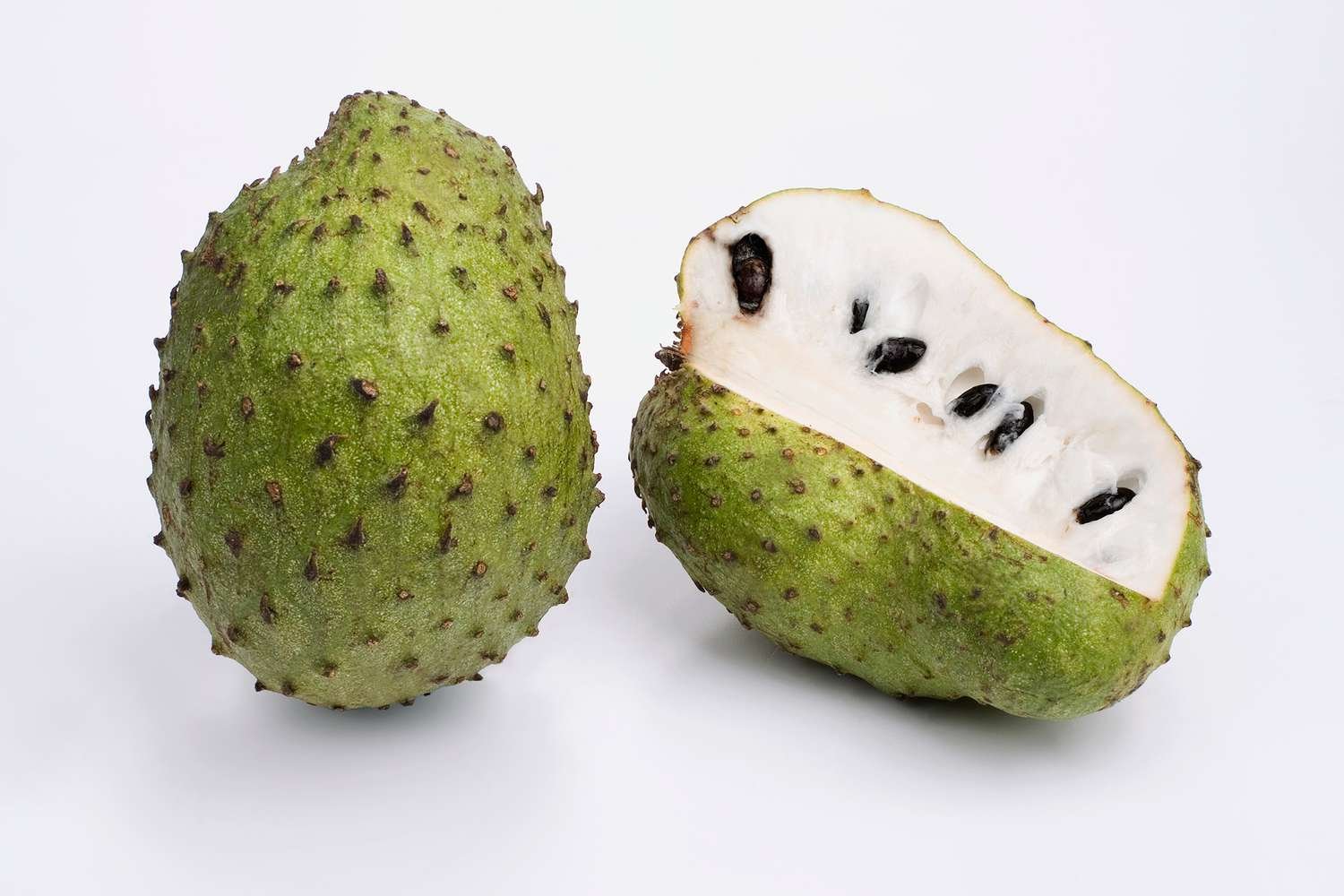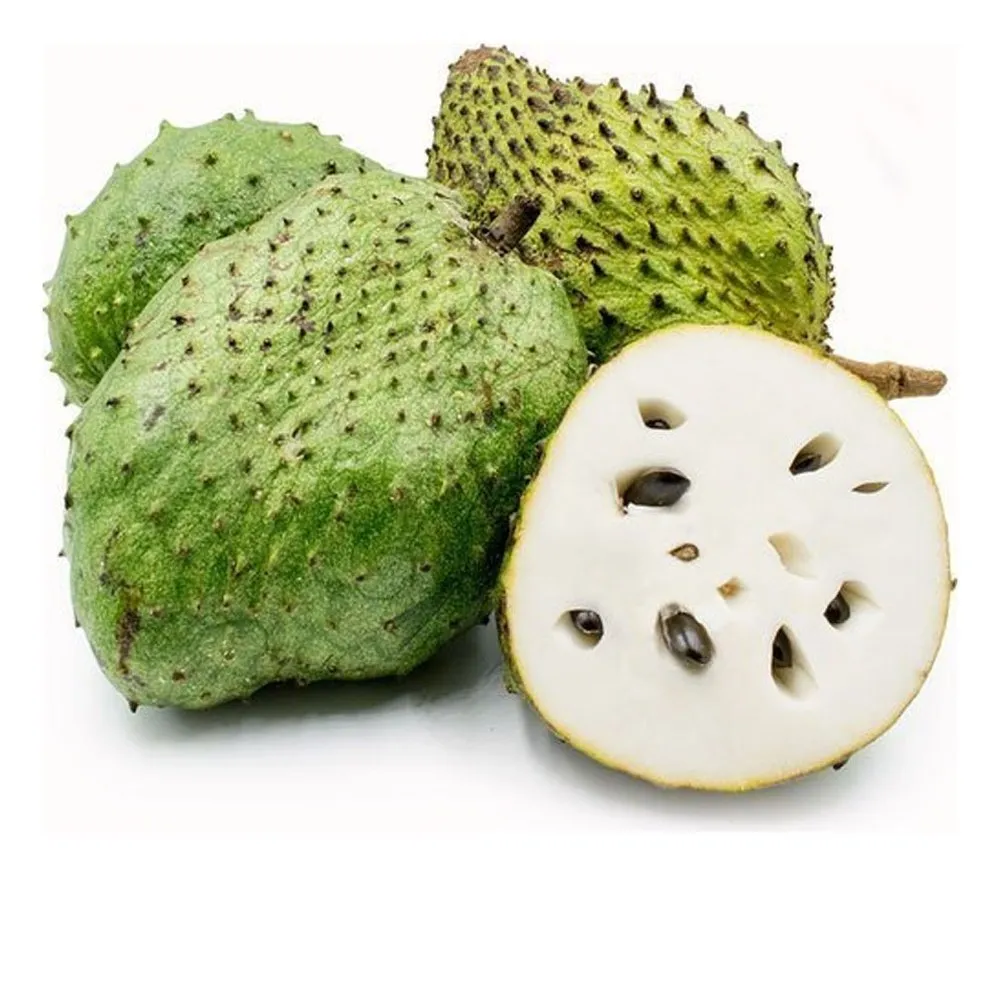Soursop Fruit Facts,FAQs, Behaviour, Habitat, Conservation and more

Soursop Fruit Facts | Description | Distribution and Habitat | Botany and evolution | Cultivation | Uses | Cultural | Interesting facts | frequently asked questions about Soursop Fruit
Soursop, also known as graviola, is a delicious and nutritious tropical fruit with a uniquely sweet and tangy flavor. With its spiky green exterior and creamy white interior, soursop is a popular fruit in many tropical regions, prized for its refreshing taste and numerous health benefits. From its anti-inflammatory properties to its potential cancer-fighting abilities, soursop is truly a superfruit.
Taxonomy of Soursop Fruit
| Kingdom | Plantae |
|---|---|
| Clade | Tracheophytes |
| Clade | Angiosperms |
| Clade | Magnoliids |
| Order | Magnoliales |
| Family | Annonaceae |
| Genus | Annona |
| Species | Annona muricata |
Morphology of Soursop Fruit
| Aspect | Description |
|---|---|
| Height | 4 to 8 meters tall |
| Leaves | Large, shiny, dark green, and oblong |
| Flowers | Solitary and large, up to 2.5 cm long |
| Fruit | Oval, spiky, and can weigh up to 6 kg |
| Skin | Green with spiky bumps |
| Pulp | White, creamy, and juicy |
| Seeds | Black and shiny |

Description of Soursop Fruit
Soursop is a tropical fruit with a unique flavor and a long list of health benefits. The fruit is oval-shaped, with a spiky green exterior and a creamy white interior filled with juicy pulp and black seeds. Soursop is commonly eaten raw, but it can also be used to make beverages, jams, and desserts.
The flavor of soursop is often described as a combination of pineapple and strawberry, with a hint of citrus. The fruit is high in vitamin C, fiber, and antioxidants, and it has anti-inflammatory and antimicrobial properties. Studies have suggested that soursop may even have cancer-fighting abilities, making it a truly superfruit.
Distribution and habitat of Soursop Fruit
Soursop is native to the tropical regions of the Americas, including Central America, South America, and the Caribbean. Today, the fruit is widely cultivated throughout tropical regions of the world, including Africa, Asia, and the Pacific Islands.
Soursop trees thrive in warm, humid climates with plenty of rainfall. They prefer well-drained soil and full sunlight. In the wild, soursop trees can be found in rainforests and other tropical habitats, where they provide food and shelter for a variety of animals.
Botany and evolution of Soursop Fruit
Soursop is a member of the Annona family, which includes over 100 different species of flowering plants. The fruit is believed to have originated in the tropical regions of the Americas, and it has been cultivated by indigenous cultures for thousands of years. Soursop trees are evergreen, with large, glossy leaves and fragrant, yellow flowers. The fruit is oval-shaped and covered in spiky bumps, with a juicy, white pulp and black seeds.
Cultivation of Soursop Fruit
Soursop trees are relatively easy to grow, and they thrive in warm, humid climates with plenty of rainfall. The trees prefer well-drained soil and full sunlight, but they can also tolerate partial shade. Soursop trees can be propagated by seed or by grafting, and they can produce fruit within 3 to 5 years of planting. The fruit is typically harvested when it is fully ripe, and it can be stored at room temperature for a few days.
Uses of Soursop Fruit
Soursop is a versatile fruit that can be eaten raw or used in a variety of culinary applications. The fruit is often used to make beverages, including smoothies, juices, and cocktails. It can also be used to make jams, jellies, and desserts, including ice cream and sorbet. In addition, soursop has a long history of use in traditional medicine, with some studies suggesting that it may have anti-inflammatory, antimicrobial, and cancer-fighting properties.
Cultural and Historical Significance of Soursop Fruit
Soursop has been an important part of the indigenous cultures of the Americas for thousands of years. In many cultures, the fruit is believed to have medicinal properties, and it is used to treat a variety of ailments, including fever, coughs, and digestive problems. Soursop is also an important symbol in many cultures, representing health, vitality, and longevity.
Explanatory Notes for Soursop Fruit
Soursop is a fruit that is rich in nutrients and has many health benefits. The fruit is high in vitamin C, fiber, and antioxidants, which can help to boost the immune system, improve digestion, and reduce inflammation. In addition, some studies have suggested that soursop may have cancer-fighting properties, making it a promising natural treatment option for cancer patients. Soursop is a delicious and refreshing fruit that can be enjoyed in a variety of ways, and it is an important part of many tropical cultures and cuisines.
Interesting facts about Soursop Fruit
- Soursop is also known as graviola or guanabana.
- The fruit can weigh up to 15 pounds.
- Soursop trees are evergreen and can grow up to 30 feet tall.
- The fruit has a distinctive flavor that is often described as a combination of pineapple and strawberry with sour citrus notes.
- Soursop is often used in traditional medicine to treat a variety of ailments, including infections, inflammation, and digestive issues.
- Soursop leaves are also used to make tea, which is believed to have calming and sedative effects.
- Some studies have suggested that soursop may have anti-cancer properties, although more research is needed in this area.
- Soursop is a good source of fiber, vitamin C, and potassium.
- The fruit is popular in many tropical countries, including the Caribbean, South America, and Southeast Asia.
- Soursop is a versatile fruit that can be used in a variety of culinary applications, including beverages, desserts, and sauces.
General queries or frequently asked questions about Soursop Fruit
1. What does soursop taste like?
Soursop has a distinctive flavor that is often described as a combination of pineapple and strawberry with sour citrus notes.
2. Is soursop good for you?
Soursop is a good source of fiber, vitamin C, and potassium, and it may have anti-inflammatory and anti-cancer properties. However, more research is needed in this area.
3. How do you eat soursop?
Soursop can be eaten raw, or it can be used in a variety of culinary applications, including beverages, desserts, and sauces.
4. Can soursop be frozen?
Yes, soursop can be frozen for later use.
5. Is soursop a natural remedy for cancer?
Some studies have suggested that soursop may have anti-cancer properties, although more research is needed in this area.
Conclusion
Soursop is a delicious and versatile fruit that is popular in many tropical countries. The fruit has a unique flavor and texture, and it can be used in a variety of culinary applications. Soursop is also known for its potential health benefits, with some studies suggesting that it may have anti-inflammatory, anti-cancer, and other medicinal properties. However, more research is needed in these areas. Overall, soursop is a fascinating fruit with a rich cultural and historical significance, and it is definitely worth trying if you have the opportunity.












